We caught up with the brilliant and insightful Paige Booth a few weeks ago and have shared our conversation below.
Paige, looking forward to hearing all of your stories today. Can you take us back in time to the first dollar you earned as a creative – how did it happen? What’s the story?
The first dollar I ever earned from my art was when I sold a collage to a complete stranger in another state at the height of the pandemic.
When COVID hit, I had only been making collage art for a year or so and I had never showed it to anyone. But in the isolation and loneliness of the 2020 lockdown, I decided to make collage postcards and send them to my friends and family, just to deliver something joyful to their mailboxes to say “I miss you.” And a tactile, analog antidote to all the Zooming we were doing at that time.
Then, I read on Instagram about a call for mail art. Pulp Gallery in Holyoke, Mass., invited any artist to submit a piece of mail art for a group show called “Pushing the Envelope.” I was nervous to do it but I figured, “What’s the risk? They are total strangers.” The effort was a huge success–they received over 500 pieces of mail art and put on a big show and sale. One day the gallery owner messaged me and said that my collage postcard been bought by a Boston architect and art collector. I was so flattered!
I wish I could say I had that “first dollar” check framed on my studio wall, but in typical, modern-day fashion, the payment came by Venmo. Still, it was a turning point in my budding career as an artist.
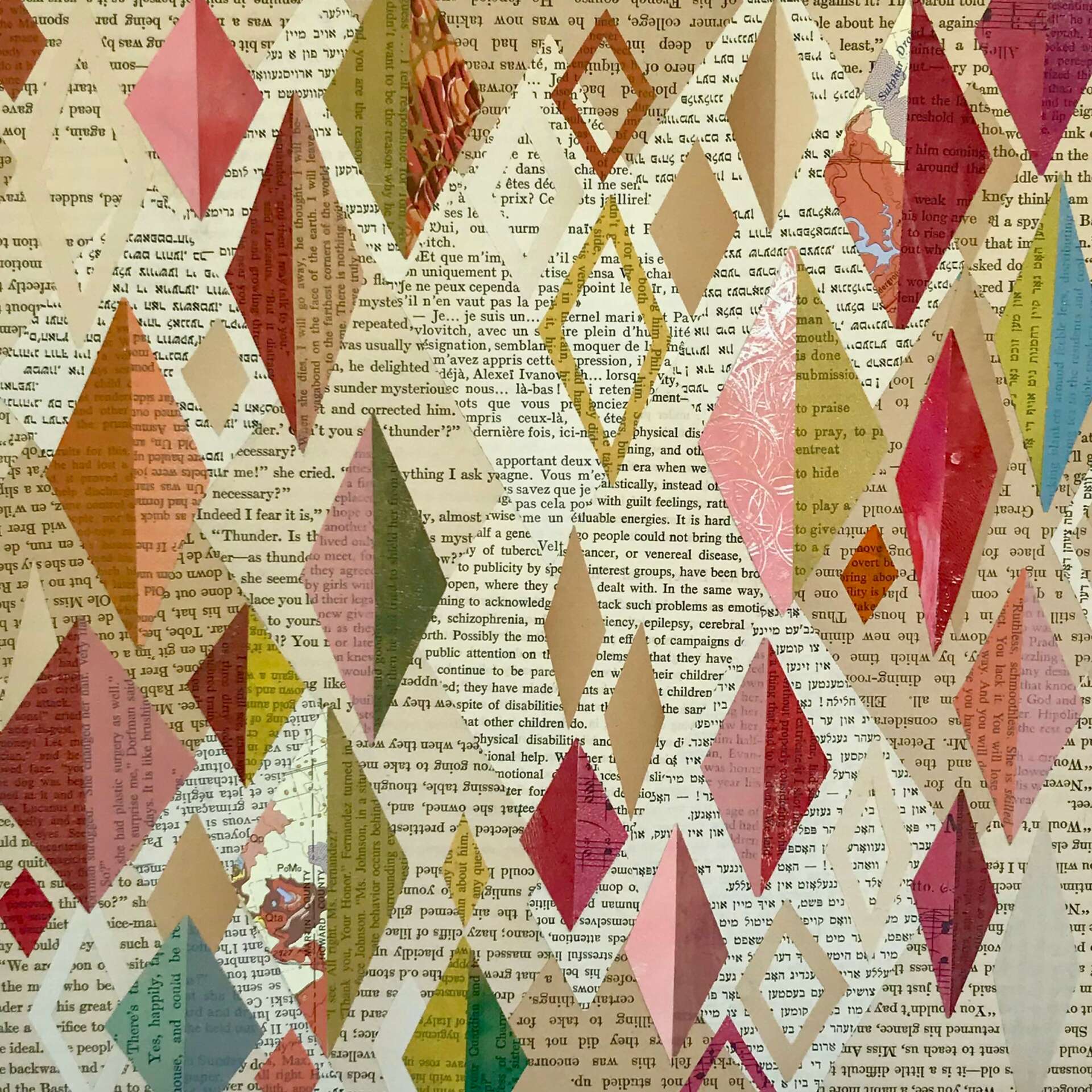
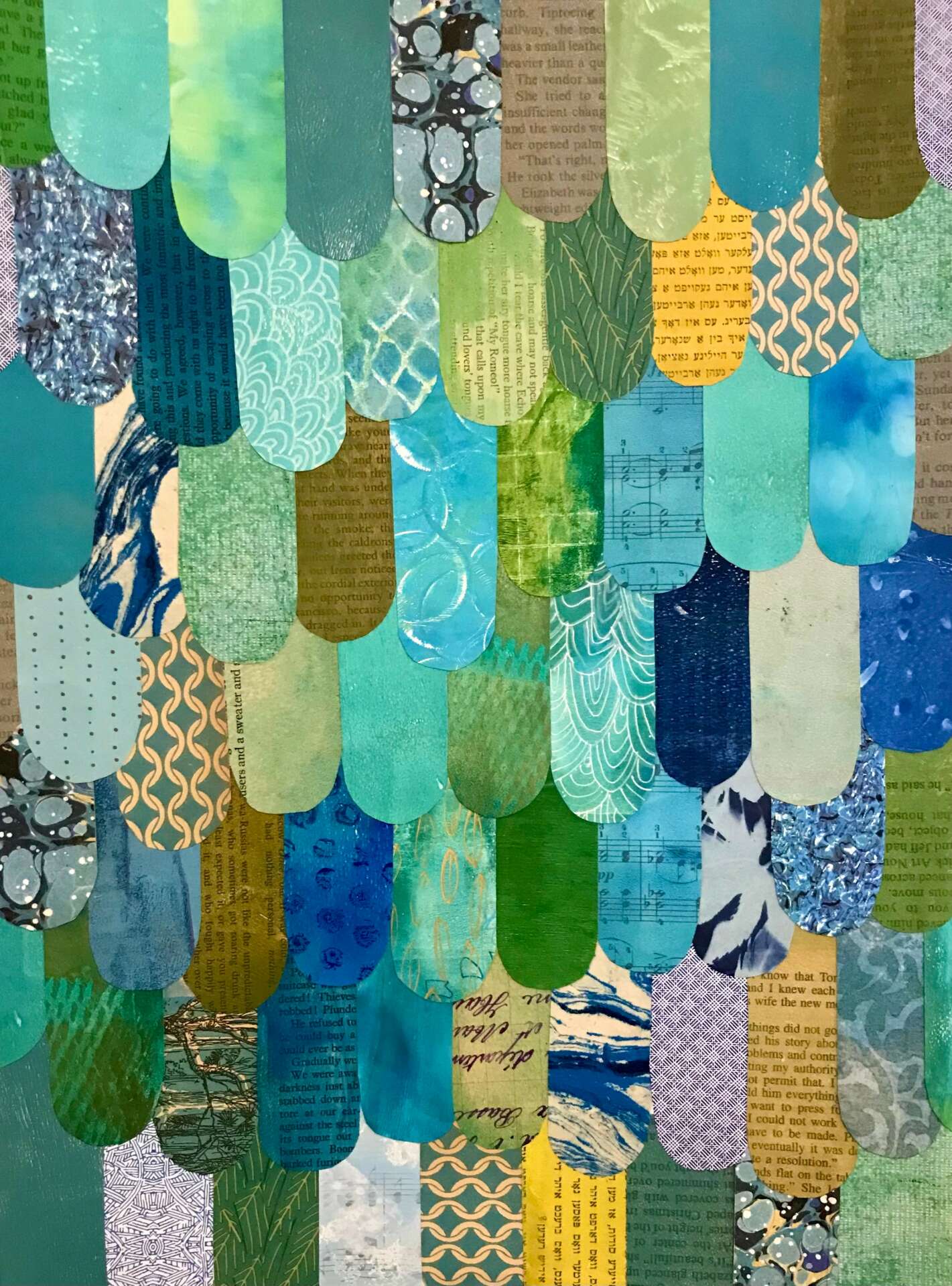

Paige, before we move on to more of these sorts of questions, can you take some time to bring our readers up to speed on you and what you do?
I am a collage artist interested in texture, pattern, color, hidden history, and the tactile qualities of paper. I collect paper that has acquired patina over time and evokes nostalgia. My collages incorporate those memories, but blur the original meaning of the papers to create new stories.
My source materials include found papers, advertising, paperback romance novels, textbooks, vintage magazines, and product packaging. Incorporating my own personal ephemera like ticket stubs and event programs allows me to embed some of my own memories into the work or develop new narratives from someone else’s papers found in thrift stores, antique shops or even on the street. I often monoprint my own collage papers using a gel plate to create custom colors and textures.
In this digital age, I’m very committed to paper! We all spend so much time looking at screens, texting on phones, meeting by Zoom. A hand cut collage is an antidote to all that tech, and a reminder of how we used to communicate and the lasting value of something committed to paper.
Like many artists, I have a different “day job.” I’ve worked for many years in marketing and communications, drawn to the field for its intersection of creativity and commerce. Working closely with designers and writers, I’ve always loved the creative process, visual design, color, typography, and storytelling. So when I finally made room in my life for my own artistic practice to develop, it’s not surprising that my work emerged as more design-driven than conceptual.
I have a voracious appetite for art! I visit art museums in every city I travel to and attend gallery openings almost every week. My art heroes include Louise Nevelson, Alexander Calder, Mark Bradford, Leonardo Drew, Alex Katz, Hilma Af Klint, and collage artists Liberty Blake and Lance Letscher. Austin has a vibrant art scene and a very welcoming artistic community. I love to support other local artists and I’ve been supported and encouraged by my artistic friends.
One of my favorite things to do is commissions. Clients often want a custom collage as a gift to mark an anniversary, a birthday, or a move into a new space. I love the challenge and the satisfaction of making a piece that reflects the personality and experiences of the recipient while allowing me to explore new creative directions. And who wouldn’t want a gift that is made especially for them?!
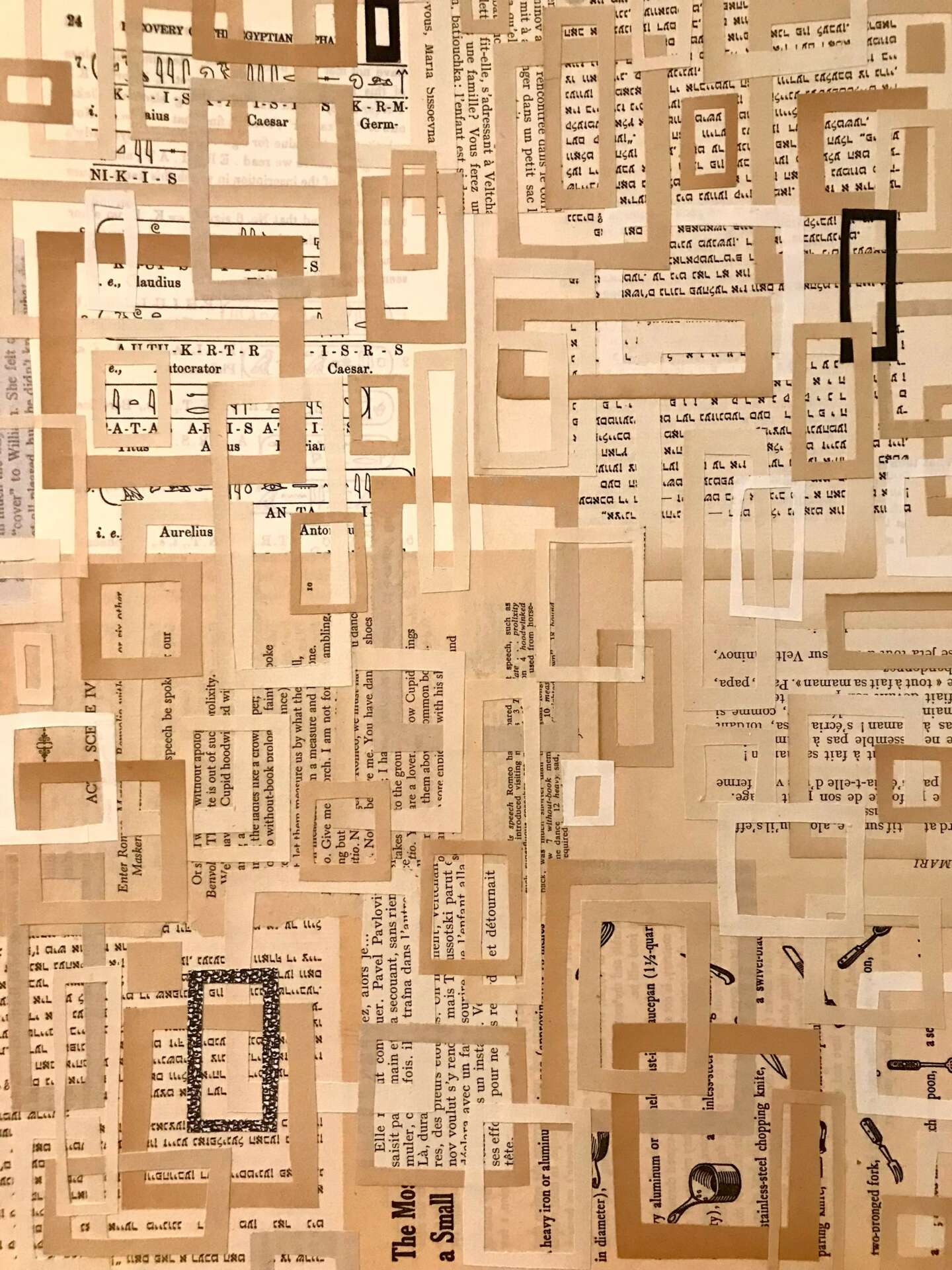

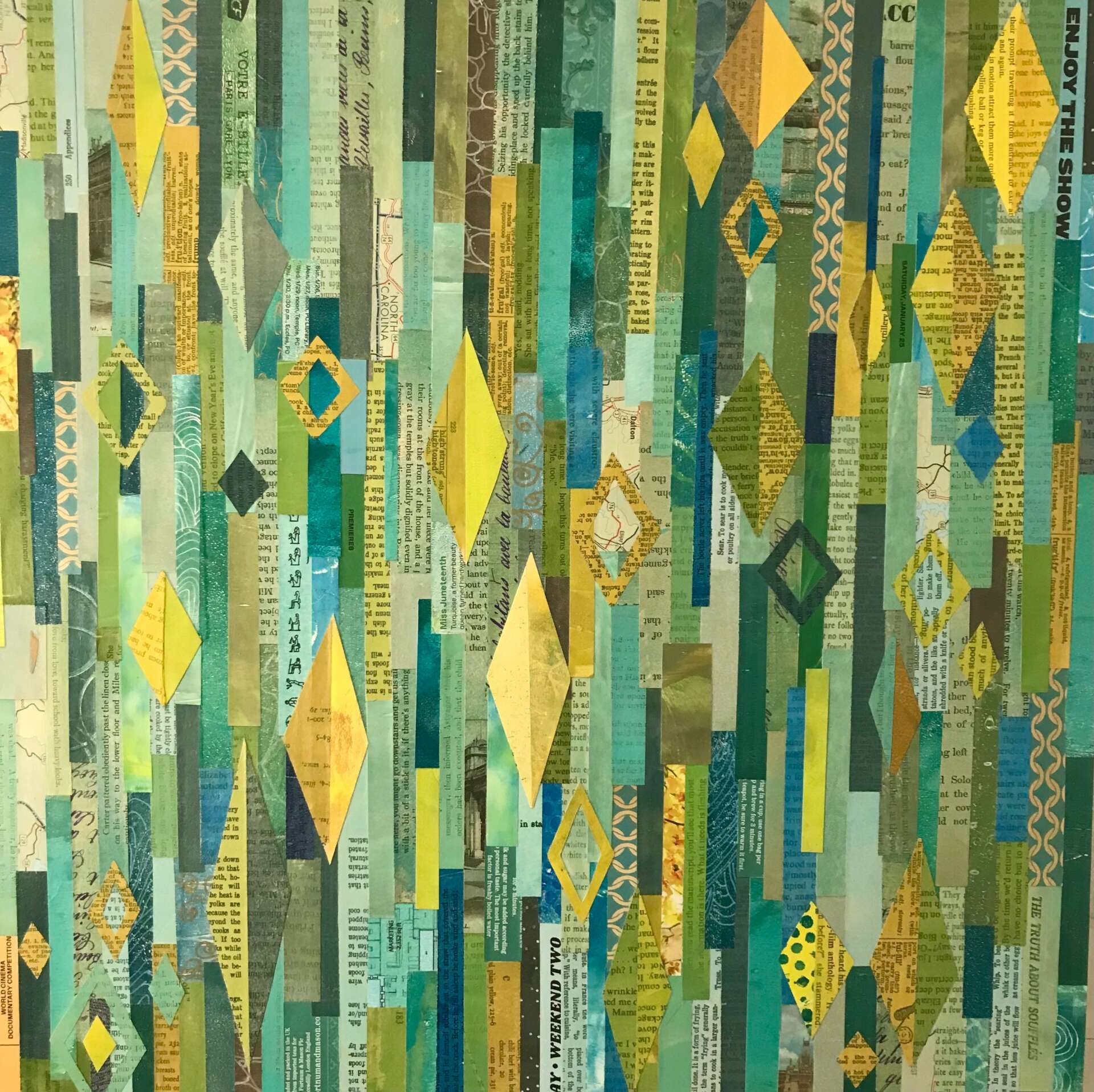
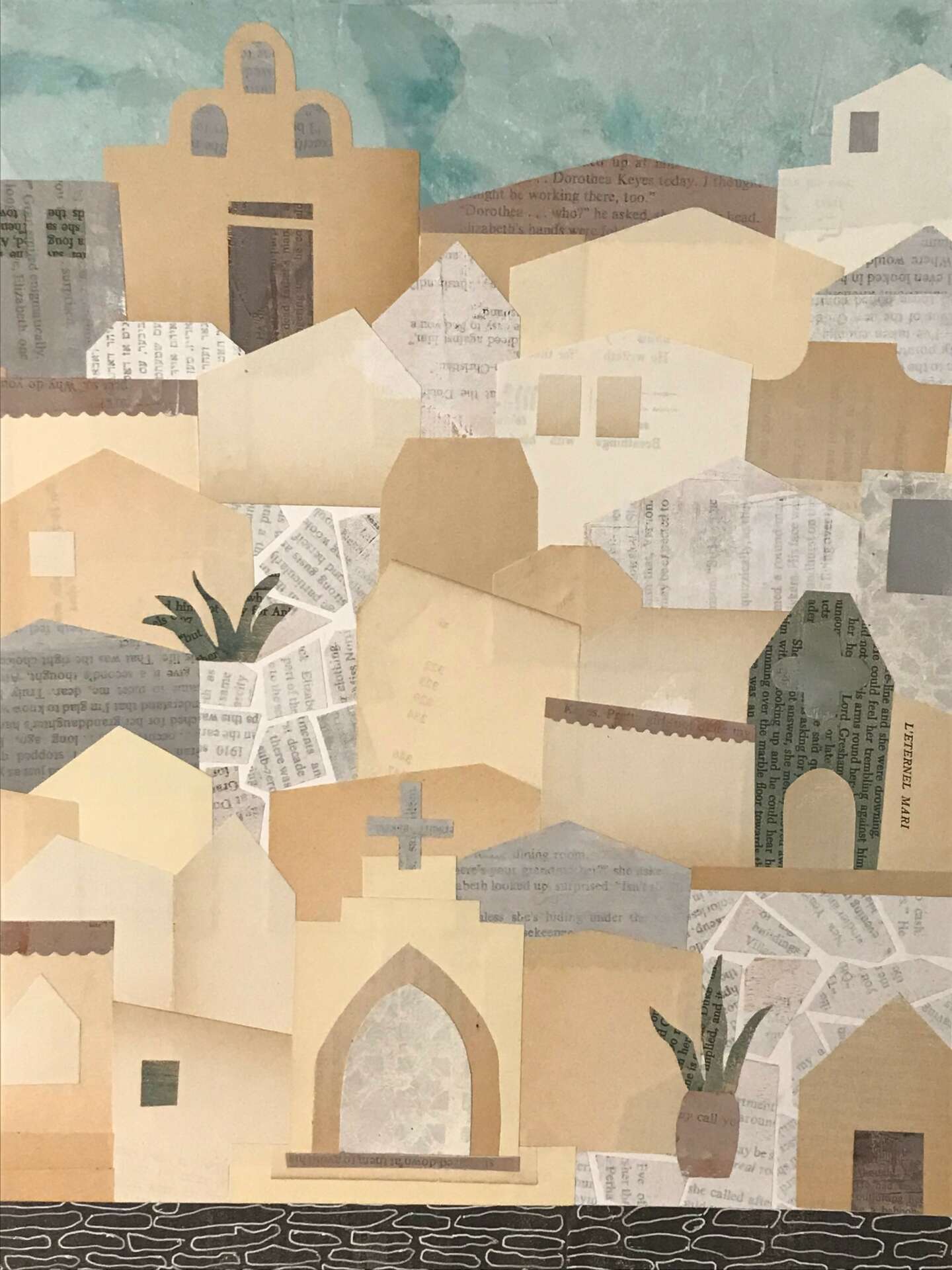
Can you share your view on NFTs? (Note: this is for education/entertainment purposes only, readers should not construe this as advice)
As an artist, I’ve consciously made the decision to work in the analog, physical realm. My collage art is about the beauty and interest of tangible things like old book pages, found papers, vintage ephemera–I collect them and give them new life in my art. So I want my work to have a definite hand-made look. I’m not interested in digital collage.
As a collector, I’m most interested in seeing the hand of the artist present in the work–their techniques, their materials, their choices. So for me digital art, including NFTs, holds very little interest. But the art world is wide enough for many approaches and philosophies and it will be interesting to watch whether NFTs have a long-term role.
What’s a lesson you had to unlearn and what’s the backstory?
The big myth that held me back for many years is the belief that a person needs to be able to draw well to be an artist. I was too intimidated to take an art class in high school because I didn’t already know how to draw. How ridiculous is that? I missed out on years of art education by thinking that I already needed to magically know how to do the thing that the course was designed to teach me.
And many people think that way. Whenever art comes up in conversation, someone invariably says “I couldn’t make art. I can’t even draw a straight line!”
The truth is that there are many forms of creative expression and many of them do not depend on drawing. I draw through placement of paper. When I occasionally want to sketch out ideas to plan a composition, I use a giant pad of newsprint. I can work large and sloppy and I’m freed up by the fact that the paper is cheap and no one will ever see the drawing.
To forge a creative life, curiosity, passion, and effort matter more than innate talent. You just have to dive in and start making.
Contact Info:
- Instagram: catalpa.tree.studio


